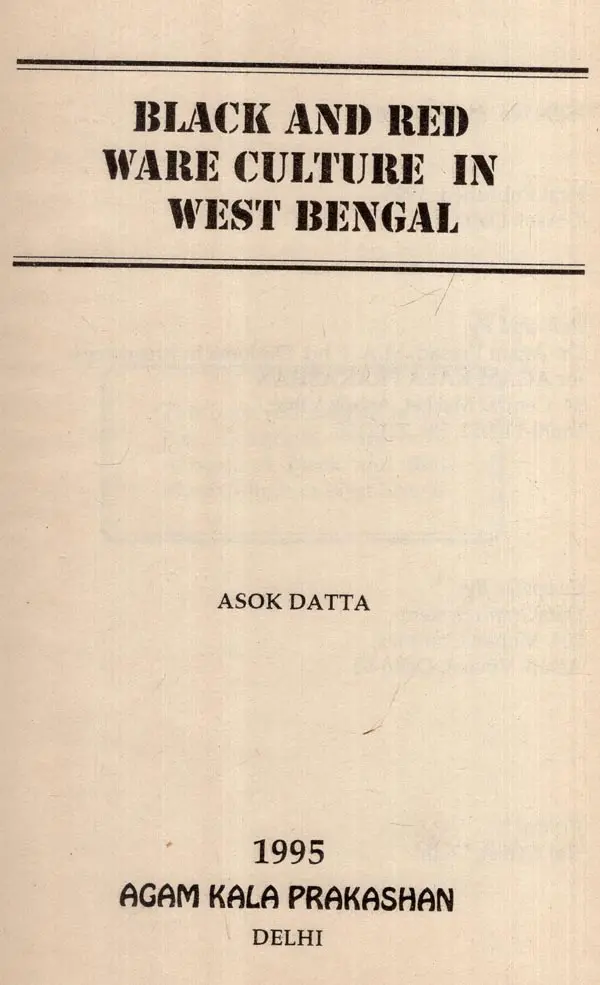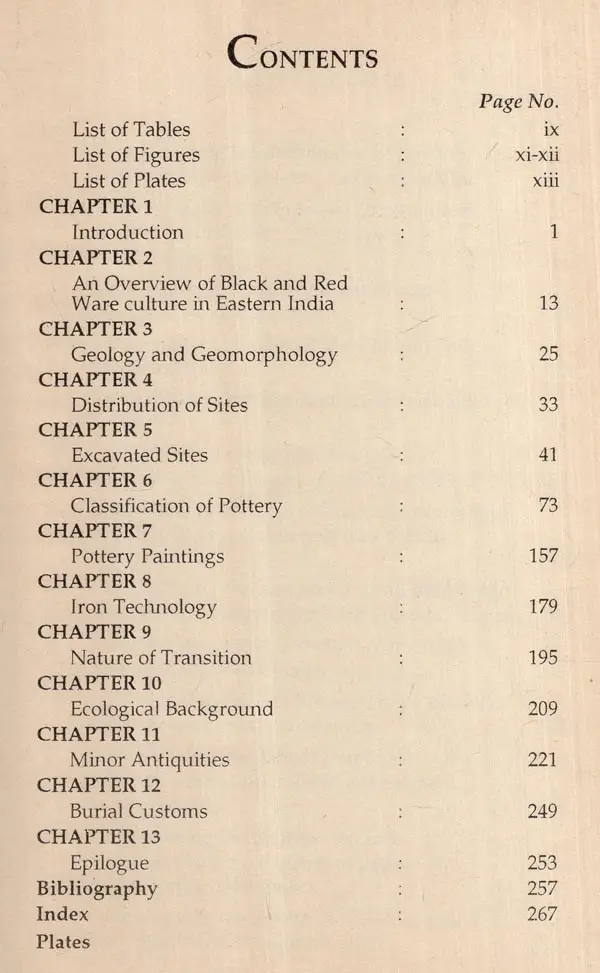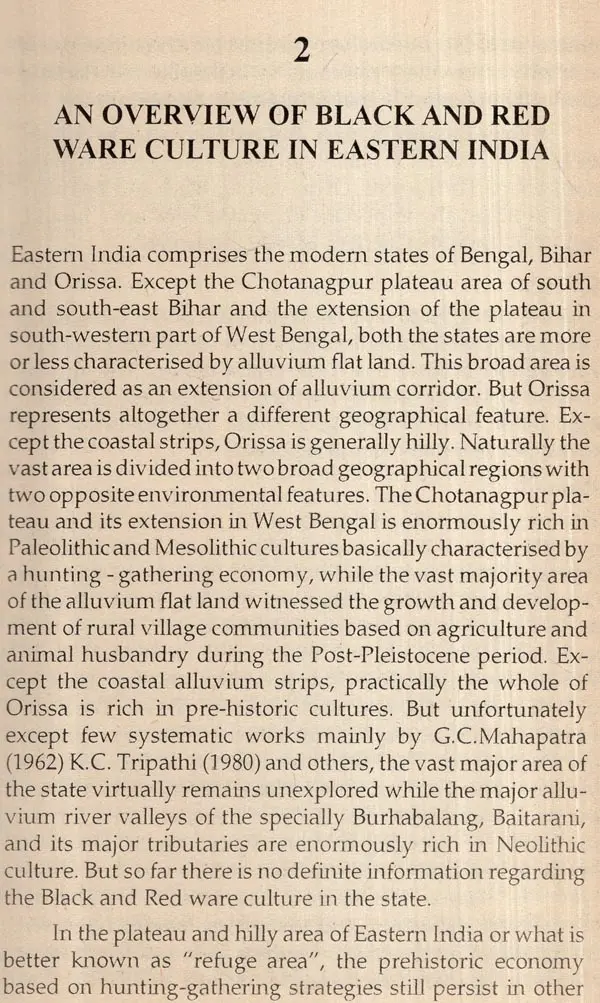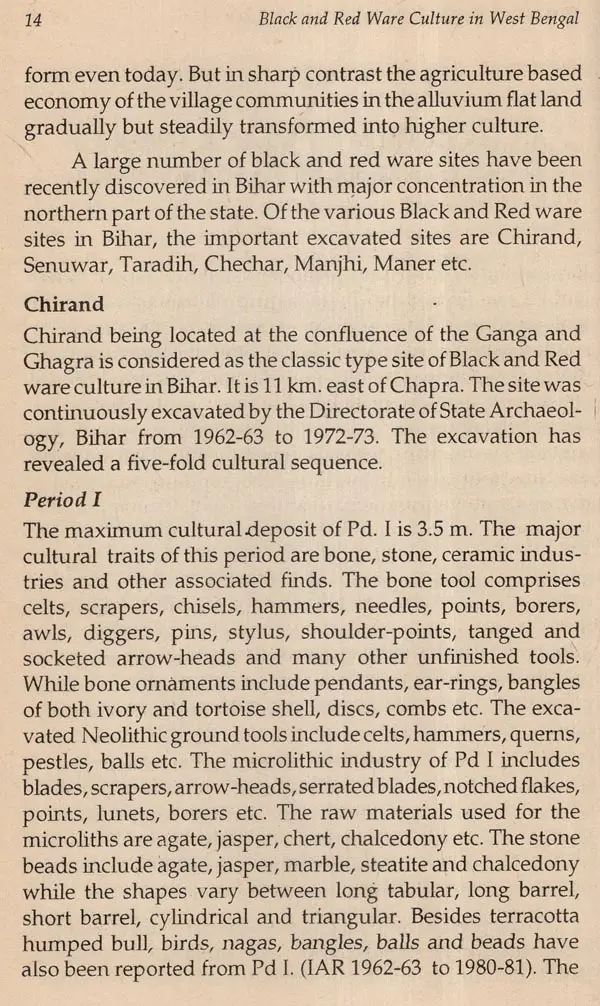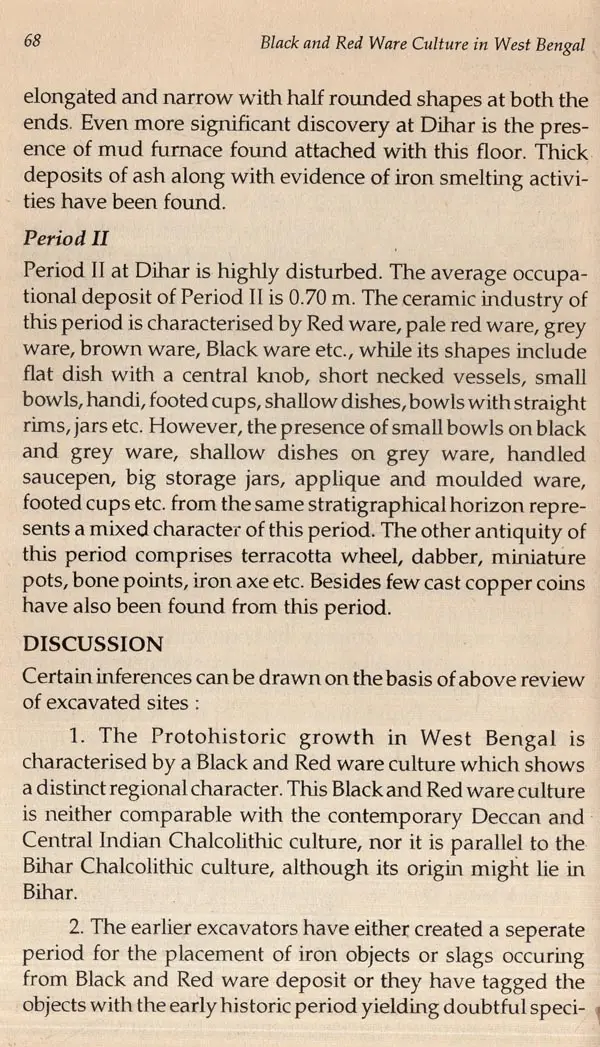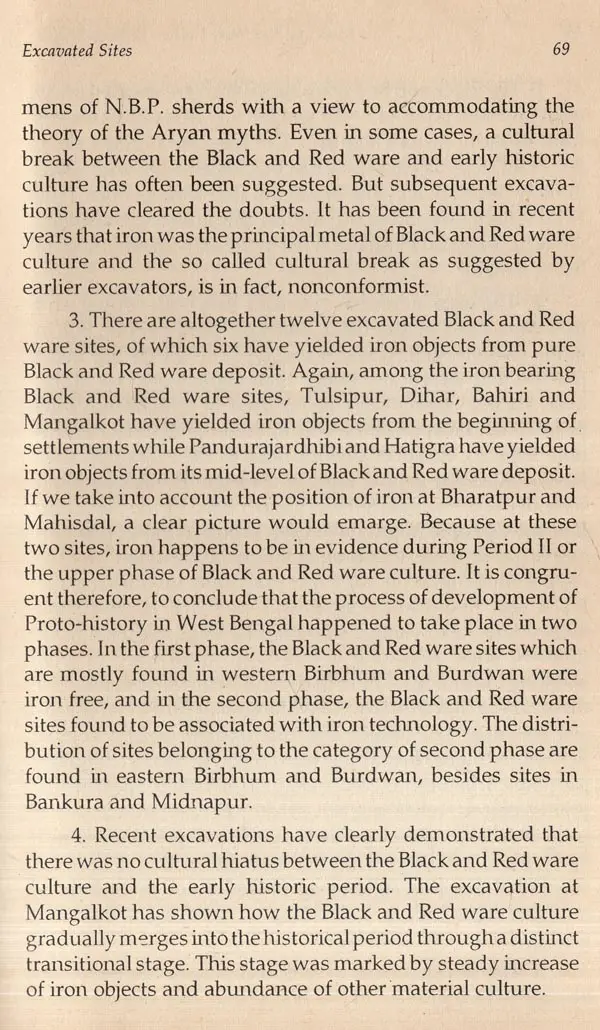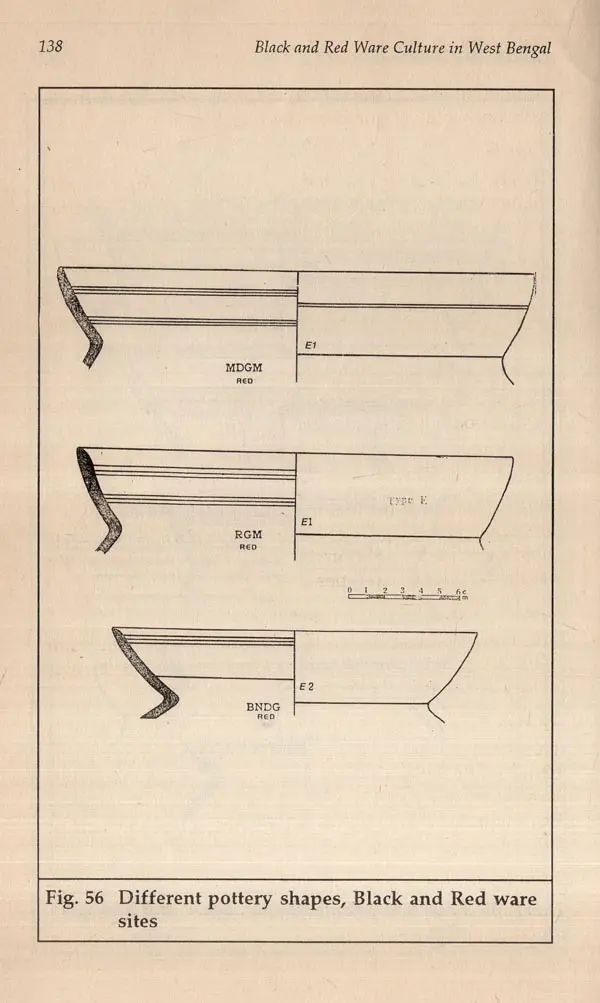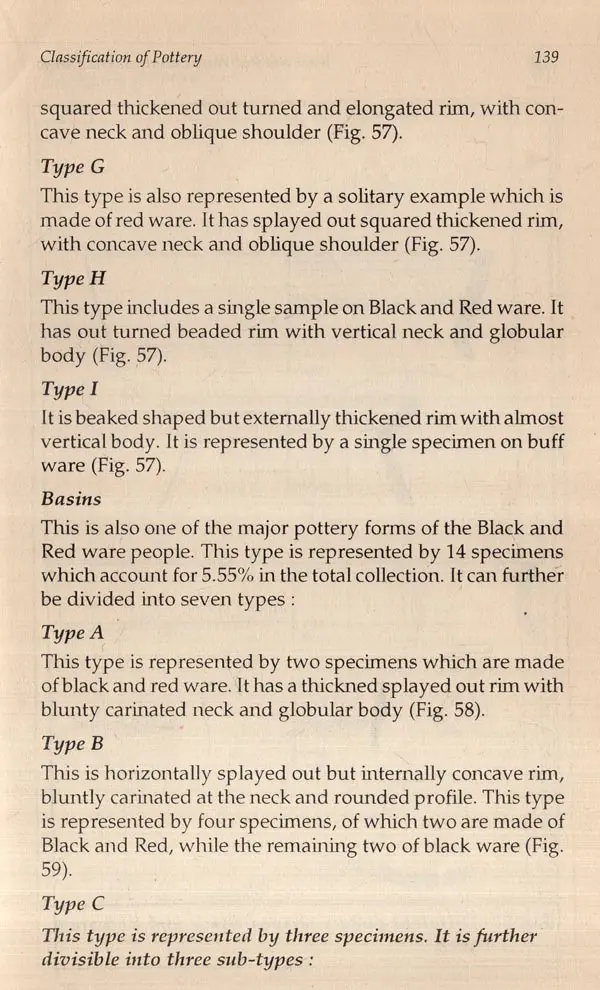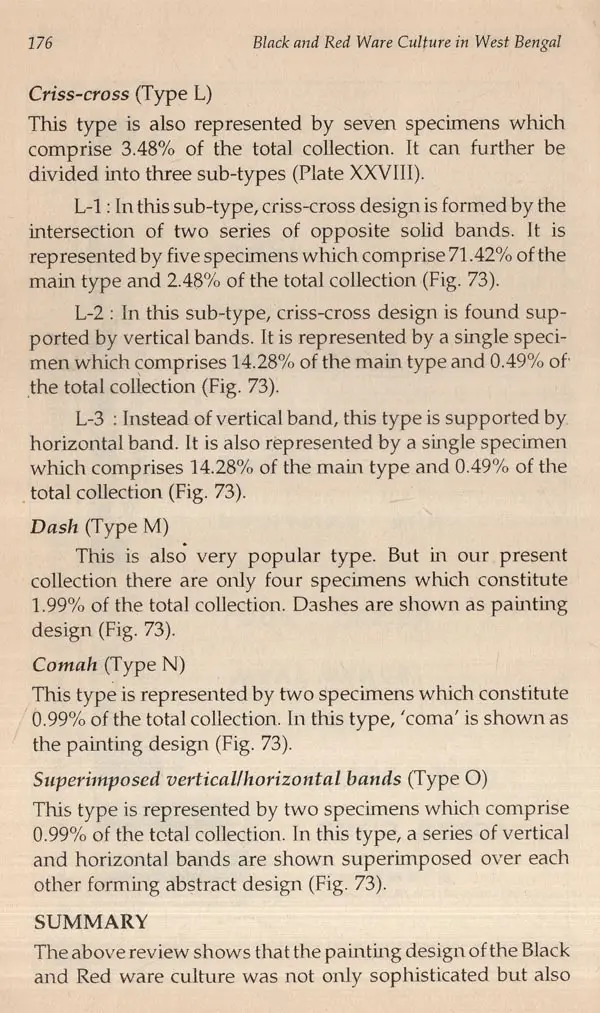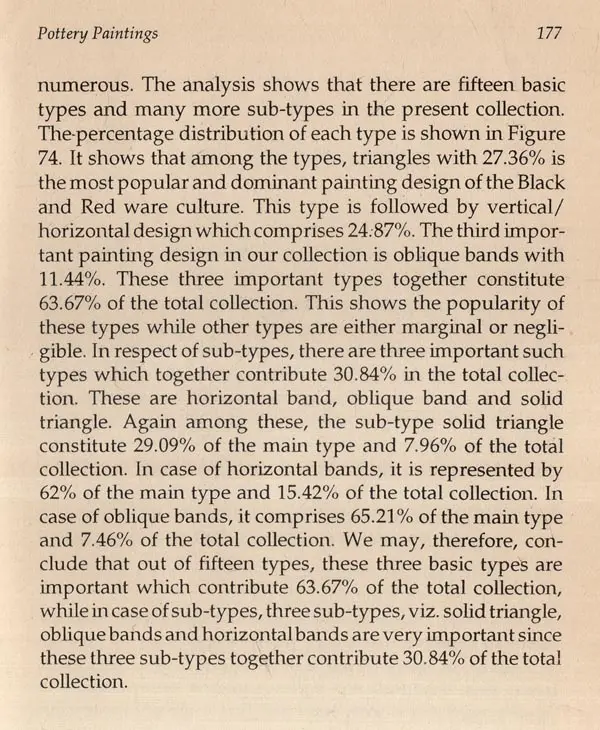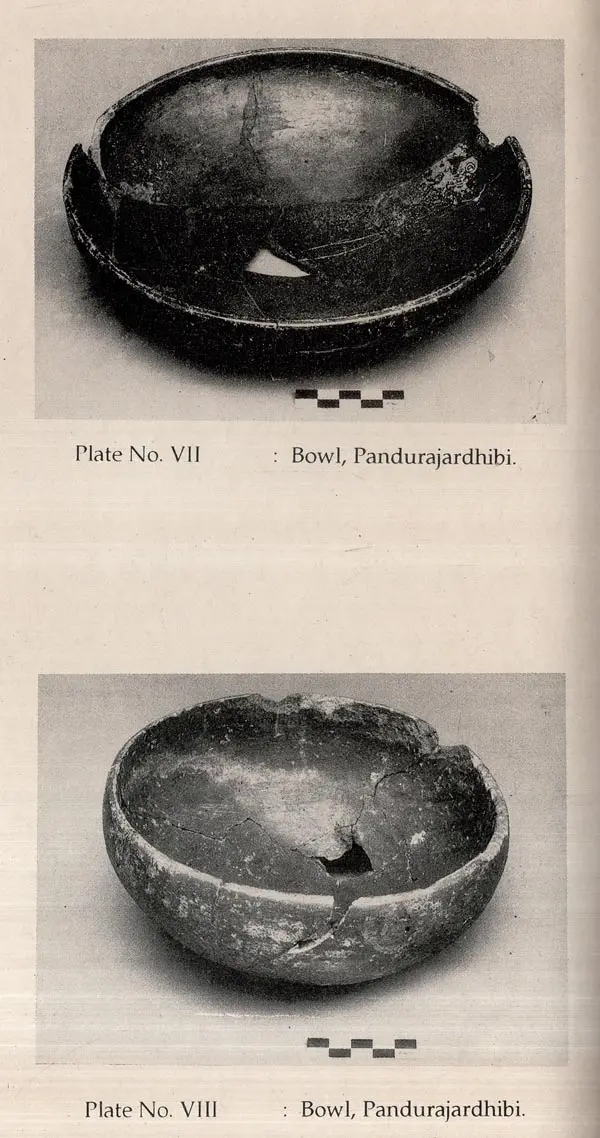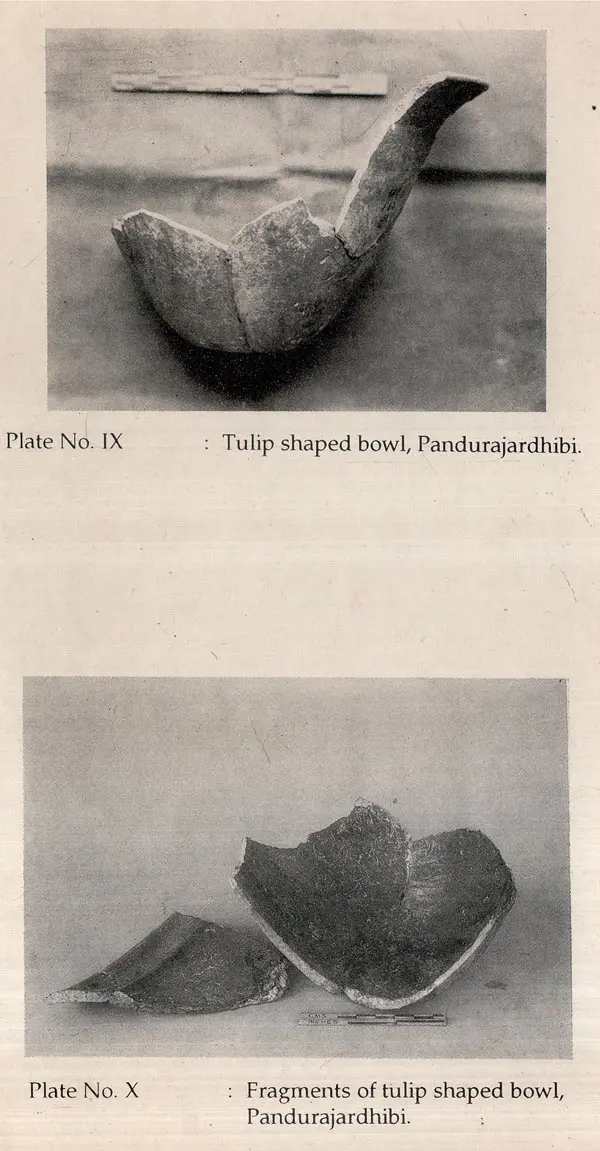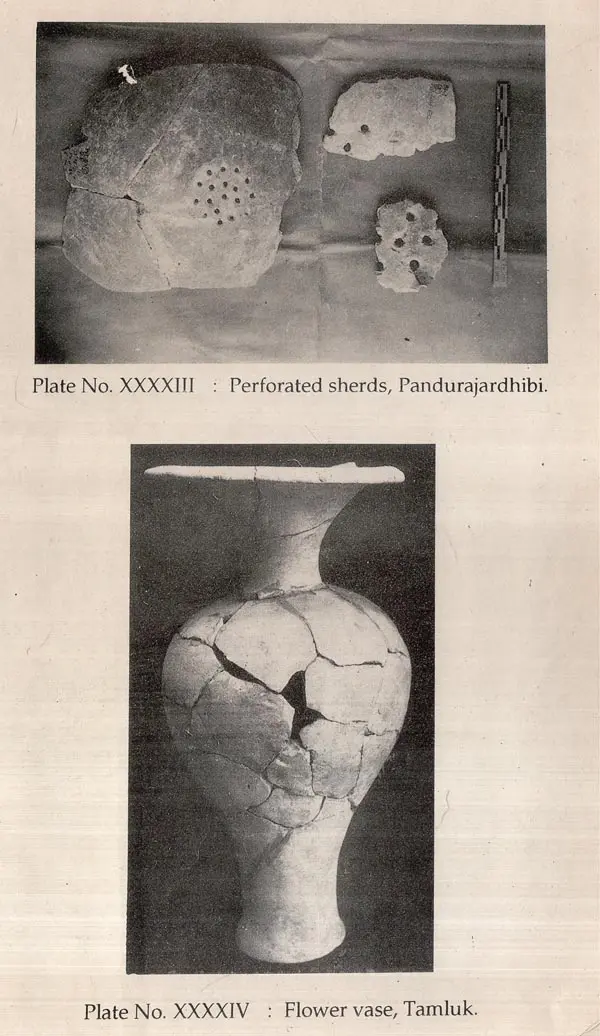About the Book The Black and Red Ware or the so called Chalcolithic culture in West Bengal was initially identified by late P.C. Dasgupta subsequently it was recognised through his excavation at Pandurajardhibi in the early sixties. Since then, at least, seventy eight Black and Red ware sites have been discovered with its core centre in the Ajay-Damodar divide. Archaeological research on Black and Red ware culture for the last three decades has brought about many changes in our approaches to the concept, structure and many other related issues connected with these early agricultural communities of West Bengal. But unfortunately despite this work, no comprehensive account on Black and Red ware culture in West Bengal is available. The present volume is expected to fulfil this long demand.
The present work is divided into thirteen chapters, of which chapter I deals with the prehistoric background of Black and Red ware culture. Besides, this chapter also introduces the major problems connected with Black and Red ware Culture. An overview of Black and Red ware culture in eastern India has been given in chapter II while chapter III deals with the geology and geomorphology of West Bengal. Chapter IV deals with the distribution of Black and Red ware sites.
Excavated Black and Red ware sites have been discussed in chapter V. Chapter VI deals with the classification of potteries while chapter VII deals with painting designs on sherds. Chapter VIII deals with various aspects of iron technology. Chapter IX discusses the nature of transition while ecological background of Black and Red ware culture has been discussed in chapter X. Chapter XI deals with minor antiquities. Chapter XII deals with the burial customs and finally chapter XIII contains the Epilogue.
About the Author Asok Datta, M.A. in Archaeology and Ancient Indian History and Culture, was awarded Ph.D degree by the University of Calcutta for his dissertation work on "Pebble-core element in India-A study on geo-cultural variation" in 1981. He was also awarded a Fellowship by the German Government in 1982 for the study of modern methods and techniques in Archaeology. He has already completed a research project on "Upper Palaeolithic culture in Midnapur District" being financed by ICHR.
Dr. Datta is the author of Palaeohistory of man and his culture and Neolithic culture in West Bengal. He is also the editor of Studies in Archaeology and Man and his Culture. In addition, more than twenty five research papers have already been published in different research journals. At present he is engaged in preparing a source book of Archaeology of eastern India.
Dr. Datta teaches archaeology in the Department of Archaeology, Calcutta University.
Introduction In view of operational existence of a varied and diverse climatic, geographical, geological and overall ecological fac tors in the Indian subcontinent ever since the emergence of man, one should not expect a uniform horizontal and vertical growth of the Indian culture. India is therefore, a vast country characterized by a number of distinct ecological zones. Naturally, its material culture is very much condi tioned and shaped by these parameters. West Bengal, being situated in the eastern margin of the Indian subcontinent is always considered as the backwater of pan-Indian cultural expansion. But recent evidences strongly indicate the exist ence of a discrete culture having its own identities. This personality of West Bengal which is rooted in its soil, was developed through different stages time wise, before finally being shaped and influenced by the pan-Indian cultural expansion. It is indeed, true that despite this regional iden tities, the overall cultural pattern displays a strong unity with the Indian culture as a whole. However, in view of diverse ecological backdrop, one should not underestimate the regional forces in the making of the total process, reason being environment is always instrumental in shaping the nature and character of any cultural growth. Hence, culture should be defined in terms of its proper perspective keeping in view the geographical and other regional features and such cultural diversities are often common in a vast country like India with the epicentre of unity.
Book's Contents and Sample Pages
